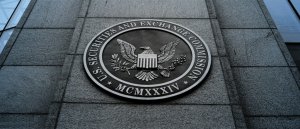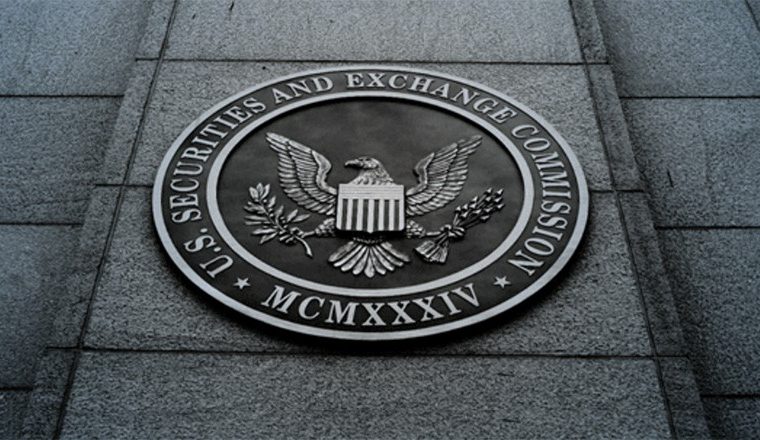The new rules require covered clearing agencies in the U.S. Treasury market to implement policies ensuring the clearing of specific secondary market transactions. Clearing agencies are also mandated to separately calculate and collect margin for house and customer transactions and facilitate access to clearing, even for indirect participants.

The Securities and Exchange Commission (SEC) has implemented new rules to improve risk management practices in central counterparty dealings within the U.S. Treasury market. These amendments aim to facilitate more comprehensive clearing of U.S. Treasury securities transactions.
The rule changes update membership standards for covered clearing agencies in the U.S. Treasury market, specifically targeting the clearance and settlement of certain secondary market transactions. Additionally, these changes are designed to mitigate risks for clearing agencies and promote further central clearing in this critical financial market.
Policies ensuring the clearing of specific secondary market transactions
SEC Chair Gary Gensler commented on the significance of these rules, stating, “The $26 trillion Treasury market is foundational to our capital markets. A significant portion of Treasury markets remains uncleared, posing systemic risks. The adoption of these rules is a step towards addressing these risks by enhancing customer clearing and expanding the scope of transactions required to be cleared.”
The new rules require covered clearing agencies in the U.S. Treasury market to implement policies ensuring the clearing of specific secondary market transactions. These include repurchase and reverse repurchase agreements collateralized by U.S. Treasury securities, interdealer broker transactions, and transactions involving registered broker-dealers or government securities dealers.
Brokers’ customer margin as a debit in the reserve formula
Additionally, broker-dealers are now permitted to count customer margin deposited at a clearing agency in the U.S. Treasury market as a debit in the customer reserve formula, subject to conditions. Clearing agencies are also mandated to separately calculate and collect margin for house and customer transactions and facilitate access to clearing, even for indirect participants. Exemptions are provided for transactions involving central banks, sovereign entities, international financial institutions, or individuals.
The amendments will be implemented in two phases, with the first phase focusing on the separation of house and customer margin and access to central clearing, to be completed by March 31, 2025. The second phase will see the mandatory clearing of specific transactions, staggered for cash and repurchase transactions, with compliance deadlines set for December 31, 2025, and June 30, 2026, respectively.
SEC’s Hester Peirce has questions
SEC Commissioner Hester M. Peirce, in her statement titled “Careening Toward Clearing,” expressed concerns about the SEC’s new rules for the U.S. Treasury market. Peirce cautioned against the hasty implementation of mandatory clearing, advocating for a more gradual, adaptable approach. She argued that moving directly to a clearing mandate could disrupt the market, citing concerns raised by commenters about the impact on transaction costs, liquidity, and operational challenges.
Peirce suggested that the SEC should first address disincentives to clearing and observe market changes before considering further regulatory actions. She noted that while the amendments include steps to make central clearing more attractive, they lack flexibility to adjust or halt the process if necessary. Peirce also raised questions about the statutory limits of directives to clearing agencies, the impact on market liquidity, pricing, competition, and the potential risks of concentrating transactions in a single clearinghouse.
Despite her disagreement with the rule’s approach, Peirce commended the SEC team for their work and underscored the need for thoughtful implementation. Her statement reflects a call for careful consideration and responsiveness to market dynamics in the regulation of the U.S. Treasury market.
“I do have a number of questions:
- The final rule directs Treasury clearing agencies to require that the direct participants submit for clearance and settlement all eligible secondary market transactions to which they are a counterparty. In other words, we are directing clearing agencies to force their members to change the way they do business on the theory that doing so will “reduce contagion risk” to the clearing agency. What are the statutory limits to these types of directives? Could we direct a clearing agency to establish rules that prohibit members from engaging in crypto transactions, financing payday lenders, or funding startups because those activities are risky to the member and thus indirectly to the clearing agency?
- If, for some reason, FICC were unable to clear transactions for an extended period of time and no other Treasury clearing agency existed, would the mandate automatically cease, or would the Commission have to take some action? Could the potential uncertainty about how the clearing mandate would apply roil markets at an already uncertain time?
- While most people see the benefits of central clearing, the risks of concentrating transactions in a single clearinghouse are also evident. Former Federal Reserve Chairman Ben Bernanke explained that: “[T]he historical record shows that clearinghouse arrangements have generally withstood even severe crises. This solid performance reflects good planning and sound institutional structures but also some degree of good luck, as crises have also revealed important vulnerabilities, vulnerabilities which prompted subsequent reforms by both the private and public sectors.” Good luck is not a strategy, so why can I be confident that Treasury clearinghouses will perform even in times of market stress?
- If the clearing mandate is so beneficial, why are we excluding sovereign entities?
- Our rules can serve to increase barriers to entry and entrench large competitors, which leads to market concentration. Small- and mid-sized firms have suggested that the clearing mandate could raise costs for them and thus could drive them out of the market. Do you think this concern is valid and, if so, what steps have you taken to mitigate the concern?
- The final rule excludes Treasury repos and reverse repos between a direct participant and an affiliated counterparty, on the condition that the affiliate submits for clearance and settlement all of its other Treasury repos or reverse repos. This condition seems to extend the clearing mandate beyond transactions with a direct participant. Do we have the authority to reach these transactions?
- Clearing agencies will have to ensure that the transactions of both domestic and foreign affiliates are submitted for clearing. Do we have concerns about the extraterritorial reach of this rulemaking?
- What is the optimal level of clearing in the Treasury markets?
- Several commenters raised significant operational concerns, including the lengthy current process of onboarding new sponsored clearing participants and the limited capacity for sponsored clearing, in part because of low or negative profitability of this business. Is the staff prepared to address possible disruption if the necessary sponsored clearing capacity does not materialize? If so, how?
- What keeps you up at night in terms of how this rule might negatively affect liquidity, pricing, or competition in these markets?”
SEC’s Crenshaw noted the decline in centrally cleared transactions in recent decades
SEC Commissioner Caroline A. Crenshaw highlighted the paramount importance of the U.S. Treasury market and the recent SEC rule amendments aimed at enhancing its resilience. These amendments focus on expanding central clearing for Treasury securities, which is crucial for reducing market disruptions and improving overall financial stability.
U.S. Treasury securities, being direct obligations of the U.S. Government, are integral for investment, hedging, and as benchmarks for other financial instruments, Crenshaw said, adding that their role in liquidity provision and monetary policy implementation further underscores their significance.
She pointed out the decline in centrally cleared transactions in recent decades and the risks associated with hybrid clearing models. These models, which combine central and bilateral clearing, introduce inconsistencies and less transparency in risk management practices, potentially elevating market risks. Crenshaw referenced several past market disruptions, including the 2014 flash rally, the 2019 repo rate spike, and the 2020 Covid-related market turmoil.
The rule amendments are expected to extend the benefits of central clearing to more repo and cash transactions involving U.S. Treasury securities. This change aims to reduce counterparty risk, contagion risk to the Fixed Income Clearing Corporation (FICC), and operational and liquidity risks, while enhancing multilateral netting of transactions. Central clearing’s advantages grow with an increasing number of participants, thus broadening its reach is pivotal for market stability.
Expanded central clearing is anticipated to enhance regulatory visibility, particularly in the opaque repo market, and improve price transparency. It will also allow for better insight into settlement risks, enabling FICC to identify concentrated positions and adjust margin requirements to mitigate contagion risks. These improvements in transparency are expected to contribute to a more orderly and efficient market for U.S. Treasury securities.












